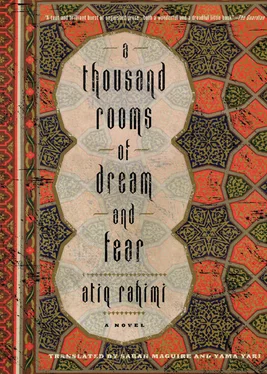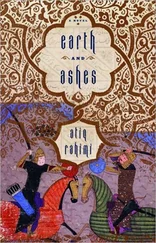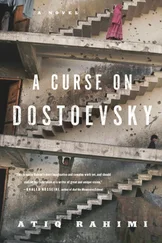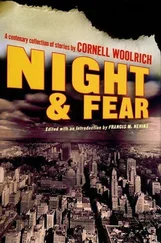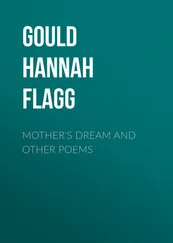“What dervish?”
Another voice comes from across the room:
“That weed has really messed his head up!”
“No, he’s just talking in his sleep.”
They laugh a drowsy, nasty little laugh together. I make a move. The mosque trembles in sympathy. My throat aches with thirst. Water!
I reach the door of the mosque. In the hallway, a young man, his diminutive frame swamped in a huge quilt, opens his sleepy eyes.
“Where are you off to?” he asks.
“I need some water!”
“There’s water in that jug.”
“It’s empty.”
“Then go and fill it.”
He turns his head away and buries himself in his quilt.
Where’s the jug? My body feels entirely drained of both blood and water. I am utterly dry. Dry as the mat under my feet. As though my feet have been sewn to the mat. I can’t move my feet. I need some fresh air. The mosque is stifling. There is no air.
“Are you going to say your Nafil prayer?” says the voice under the quilt.
My desiccated body shakes like a leaf. My right foot takes a step. Then stops. Another step. Heavier. Then another. I am outside. With no jug. With no shoes.
Dawn is breaking. The stream babbles loudly. The water invites me toward it. I run. The cold, stony ground shakes beneath my feet. I make it to the stream. Where is the dervish?
I sit down by the side of the stream.
Dawn will reveal where the dervish has gone.
Then the stream goes silent and dries up. I want to get up. My foot slips. I fall into the stream. The stream is a bottomless, dried-up well.
“God Is Great!”
The sound of the call to prayer drags me from the well.
The wolf and the lamb prowl above me in the sky. From the open door of the mosque, yawning voices drift down toward the stream.
I must go back.
Where is the morning star?
I stand up. I move my legs. I must run. I run. On water. On earth.
“STOP!”
Al-Ba’ith!
The voice nails me against the red dawn of the city. Where on earth am I?
My legs shake. I fall to the ground. The metallic taste of blood fills my mouth.
Al-Ba’ith!
A soldier’s jackboots, there, right in front of my eyes. Darkness descends.
Is it nighttime?
So soon!
TRANSLATOR’S NOTE AND GLOSSARY
A Thousand Rooms of Dream and Fear is set at a time of acute political upheaval in Afghanistan. In 1973 Mohammed Daoud Khan engineered a coup that overthrew the constitutional monarchy and inaugurated the short-lived Republic of Afghanistan (1973–1978). However, Daoud Khan’s rule was marked by corruption and instability and, when the formerly faction-ridden leftist parties overcame their differences to oppose his regime, political chaos and violent state repression ensued.
On April 27, 1978, Hafizullah Amin, the strongman of the Marxist People’s Party, organized a coup that toppled Daoud Khan’s regime. Amin’s mentor, Nur Mohammed Taraki, was installed as party leader, president, and prime minister of the Democratic Republic of Afghanistan, with Amin as his deputy prime minister (until Amin decided he wanted more power and took over the role of prime minister just under a year later). After the April coup many Afghans fled the country. In this novel, Farhad’s father is said to have left for Pakistan at that time.
The Soviet Union became increasingly concerned about Amin’s burgeoning power and his anti-Islamic stance; the Soviets were convinced that Amin was exacerbating political unrest, particularly in the countryside, and they allegedly advised Taraki to get rid of him. But the attempt to have Amin assassinated was a failure, and instead Amin seized power on September 14, 1979. Taraki was killed in the violence (supposedly smothered to death with a pillow). Although his death was first announced in the Kabul Times on October 10, there were conflicting reports of the actual date he was murdered.
Unsurprisingly, Amin’s attempts to improve relations with Pakistan and the United States were greeted with alarm by the Soviet Union. Unrest continued to escalate throughout the country, and then on December 24, 1979, Afghanistan was invaded by the Soviet Union. Amin was killed on December 27, and Babrak Karmal was handed the role of president by the invaders.
Though the narrator of A Thousand Rooms of Dream and Fear makes few overt references to the political situation in his country, it informs the whole novel. It is also assumed that the reader will understand the powerful social prohibitions that Farhad is breaking by being alone with a woman who no longer has a husband, and that Mahnaz is challenging by allowing her hair to be seen uncovered.
THE TITLEThe phrase “a thousand rooms” is a direct translation of a Dari expression that can also mean “labyrinth.”
THE EPIGRAPHShams-e Tabrizi was a thirteenth-century Sufi mystic who was the close companion of the great Persian poet Mawlana Jalal ad-Din Muhammad Rumi (1207–1273), usually known as Rumi in the West. Shams was responsible for initiating Rumi into Islamic mysticism. After Shams’s sudden disappearance in 1248, Rumi’s grief and deep devotion to his friend found expression in his Diwan-e Shams-e Tabrizi (The Book of Shams of Tabriz ) in which, as a sign of his love, Rumi attributed his own words to Shams. Poetry, especially that written by Rumi, has the highest possible status and importance for the people of Afghanistan.
BABURThe descendant of Timur (Tamerlane the Great), founder of the Timurid dynasty, Zahiruddin Mohammed Babur (1483–1530) made Kabul the capital of his empire. He was famous for the beautiful gardens and vineyards he planted throughout Kabul, many of which remained until the city descended into chaos during the civil war. After capturing much of present-day Afghanistan, Babur turned his attention to India, where he established the Mughal dynasty. But he never lost his affection for Kabul, and his body is buried there, in Babur’s Gardens.
BAGH-E-BALAThe summer palace of Abdur Rahman Khan (amir of Afghanistan from 1880 to 1901) was set on a hill to the north of the city, with a magnificent view over Kabul. In 1979 it was a place where young people would go to drink and hang out.
BARZAKHThe period between death and final judgment when the fate of the soul remains undecided.
BOOK OF THE DEADAbu Hamid Muhammad ibn Muhammad al-Ghazali (1058–1111) was one of the greatest Islamic theologians and philosophers of the Middle Ages. He was known in the West as Algazel. A Sufi mystic, his great work, The Revival of the Religious Sciences , made Sufism an acceptable part of orthodox Islam. Published in forty volumes, the final part, On the Remembrance of Death and the Afterlife , is commonly known as the “Book of the Dead.”
DERVISHA Sufi ascetic and mystic. Traditionally, dervishes practice austerity and live a life of poverty and prayer, much like Christian mendicant monks. Like monks, some live in orders and others are solitary. The great Sufi mystic poet Rumi was the founder of the most famous order of dervishes, the Mevlavi, well known for their “whirling” dance, through which they attain ecstasy and spiritual insight.
HAFIZMohammed Shams al-Din Hafiz, or Hafiz of Shiraz (1325/6–1389/90) was one of the greatest lyric poets of Persia. A Sufi mystic, he had a profound influence on poetry in Persian and Arabic, especially for his mastery of the ghazal . Goethe was very affected by Hafiz’s poetry. Hafiz was famous for his poems extolling alcohol as a means of attaining spiritual insight.
HAFT PAIKARA book written by Nazemi Ghanjavi (c. 1141–1209), who is widely regarded as the greatest romantic epic poet in Persian literature, who introduced colloquial language and a degree of realism to the Persian epic, and whose works form an integral part of the culture of Iran and Afghanistan. Haft Paikar (Seven Portraits ) is the story of the Sassanid king, Bahram-e Gur, who discovers a mysterious room in his palace that contains the portraits of seven beautiful princesses. He goes in search of the princesses, each of whom represents one of the seven virtues.
Читать дальше
